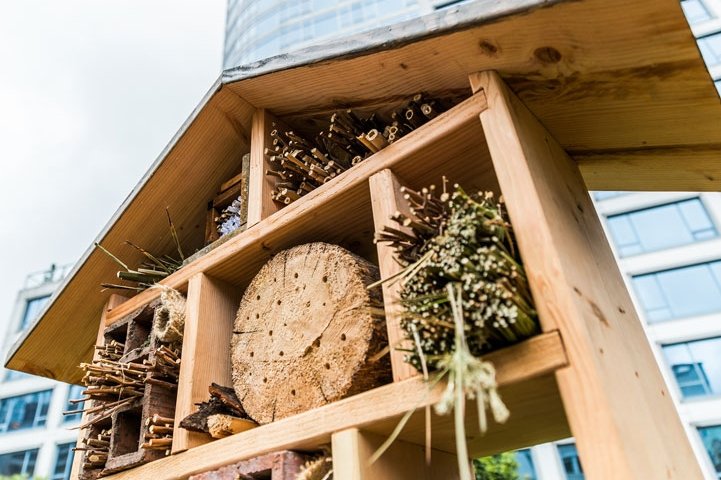
You’d better bee-lieve it, hotels especially for bees are the newest answer to the rapidly declining pollinator bee population.
A new kind of luxury hotel is popping up all over Canada. It’s completely sustainable, cozy, designed by some of the top architects in the country, and doesn’t cost a cent. Just one tiny thing, to stay there, you have to be a bee.
So why do bees need the royal treatment?
70 percent of the bee population is currently missing, and the reason is unknown. Scientists are calling this dramatic disappearance “Colony Collapse Disorder.”
Did you know?
One-third of our food is reliant on pollinator bees. Aside from fruits, vegetables, and flowers, bees help in the making of medicines, spices, and even livestock. “Cows eat alfalfa, which is dependent on bees,” says John Gibeau, president of the Honeybee Centre. “Without the bees, there’s no food for the cows and it all snowballs from there.”
What’s being done?
In an effort to sustain and increase the bee population, Fairmont Resorts have teamed up with Burt’s Bees to expand their Wild for Bees partnership by installing 16 specially built bee hotels across Canada.
How does it work?
Solitary pollinator bees are just that, solitary. Unlike honeybees that work together in a hive, pollinator bees work alone. They find a cozy space to lay their eggs (which can be difficult in urban areas), then focus on gathering food and taking care of their young. Having a safe place to call home is vital for pollinator bees. This requires shelter, with water and pollinator-friendly plants close by. A bee hotel consists of a wooden structure with holes bored into it, around 0.5 in (1 cm) wide and 8 in (20 cm) deep. It can also feature bundled together branches, rolled up paper (as long as it won’t get wet), and natural fibres such as sacking. For more inspiration, click here. We’ll talk more about how to make your own bee hotel later in the month.
